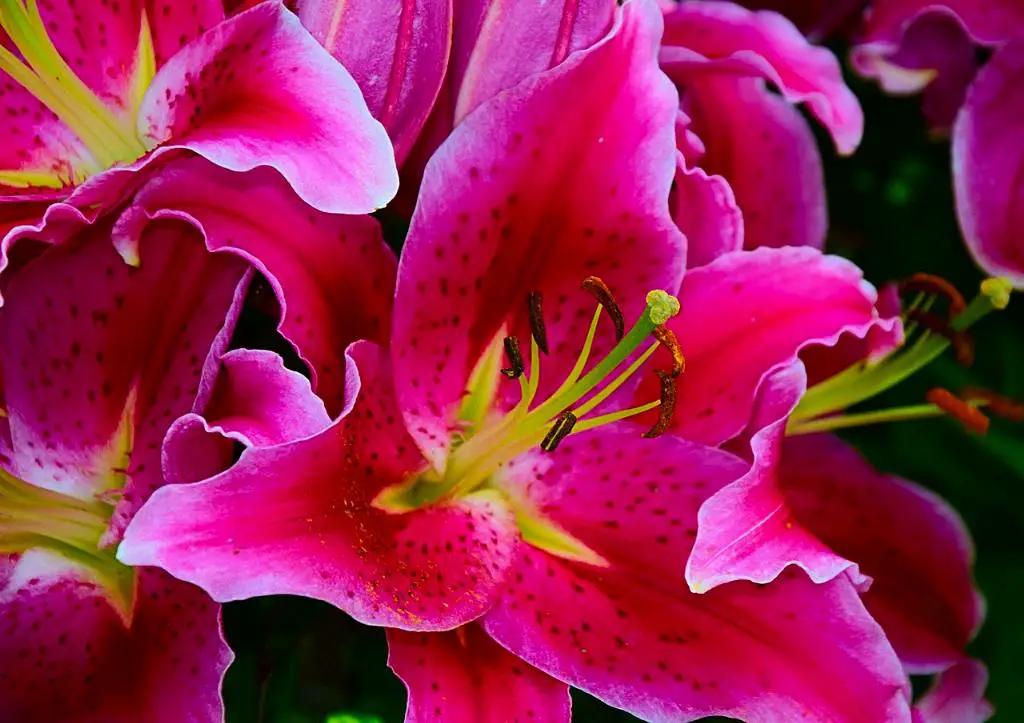Daylilies are a popular choice for gardeners due to their vibrant colors and easy maintenance. To ensure these beautiful flowers continue to bloom abundantly, it’s essential to follow a few simple tips to keep them healthy and thriving.
Deadhead Regularly for Continuous Blooms
One of the most important practices for keeping daylilies blooming is deadheading. By removing faded blooms promptly, you encourage the plant to redirect its energy into producing new flowers rather than setting seeds. Deadheading also improves the overall appearance of the plant and prevents self-seeding, which can lead to overcrowding in the garden.
Proper Watering and Soil Conditions
Daylilies require well-draining soil to prevent waterlogged roots, which can lead to root rot and other diseases. Water deeply but infrequently to encourage deep root growth and overall plant health. Mulching around the base of the plant can help retain moisture and regulate soil temperature, ensuring optimal growing conditions.
Regular Feeding for Nutrient-Rich Soil
Applying a balanced fertilizer in early spring before new growth appears can provide the necessary nutrients for vigorous blooming. Look for a fertilizer specifically formulated for flowering plants to promote healthy foliage and abundant flowers throughout the growing season.
Divide and Conquer: Managing Overcrowded Clumps
Over time, daylilies can form dense clumps that inhibit blooming. To prevent overcrowding and rejuvenate the plant, consider dividing mature clumps every few years. This process not only promotes better blooming but also allows you to expand your daylily collection by transplanting divisions to new locations in the garden.
Sunlight Exposure for Optimal Growth
Daylilies thrive in full sun to partial shade, ideally receiving at least six hours of sunlight per day. Insufficient light can result in reduced blooming and leggy growth. Choose a sunny spot in your garden to plant daylilies and watch them flourish with abundant colorful blooms.
Pest and Disease Management
Keep an eye out for common pests such as aphids, thrips, and spider mites that can damage daylily foliage and flowers. Regularly inspect your plants for any signs of infestation and take necessary measures to control pests. Additionally, practicing good garden hygiene by removing dead or diseased foliage can help prevent the spread of diseases.
Seasonal Maintenance for Long-Term Blooming Success
Throughout the growing season, monitor your daylilies for any signs of stress or nutrient deficiencies. Prune yellowing leaves, remove spent flower stalks, and check for signs of pests or diseases regularly. By staying proactive with maintenance tasks, you can ensure your daylilies continue to bloom profusely year after year.
Supporting Healthy Growth with Adequate Air Circulation
Good air circulation is essential for preventing fungal diseases and promoting overall plant health. Avoid overcrowding daylilies with other plants and provide ample spacing between individual specimens to allow for proper airflow. Pruning back neighboring plants if necessary can help prevent overcrowding and maintain optimal growing conditions for daylilies.
Embracing Diversity: Explore Different Daylily Varieties
With a vast array of daylily cultivars available, consider adding diversity to your garden by exploring different varieties and colors. Mixing early, mid, and late-blooming cultivars can extend the blooming season and create a dynamic display of colors and textures in your garden. Experimenting with new varieties can also add excitement and interest to your garden space.
Observation and Adaptation: Fine-Tuning Your Daylily Care Routine
Every garden is unique, and the specific needs of your daylilies may vary based on local climate, soil conditions, and other factors. By observing your plants regularly and adapting your care routine as needed, you can ensure they receive the individualized attention required to thrive and bloom abundantly. Stay attuned to any changes in growth patterns, flowering times, or overall plant health to address issues promptly and keep your daylilies blooming beautifully.
Enjoying the Fruits of Your Labor: Delighting in Daylily Blooms
By following these tips and caring for your daylilies with dedication and attention to detail, you can enjoy a garden filled with vibrant blooms and lush foliage throughout the growing season. Take pride in your efforts to maintain healthy, thriving daylilies that not only enhance the beauty of your outdoor space but also bring joy and satisfaction to your gardening experience. With proper care and a passion for plants, you can create a stunning display of daylily blooms that brighten your garden and enrich your connection to nature.

